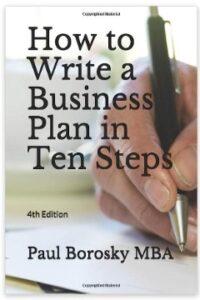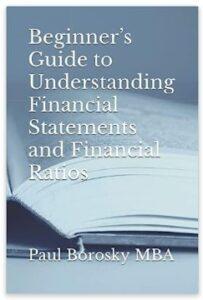How to Write a Restaurant Business Plan
The demand for restaurant business plans, templates, and pro forma financial projections grows daily.
There are numerous reasons why restaurant entrepreneurs actively seek out business plans. One compelling factor is the recent outbreak of COVID-19, which has compelled restaurant owners to reassess their business models comprehensively. As quick-service restaurants or casual dining establishments adapt, revise, or completely overhaul their business models, it becomes imperative to document these activities, making a business plan the ideal tool for this purpose. Additionally, new funding opportunities continuously arise for startup ventures and established restaurant owners. A business plan is often essential to qualify for such funding or determine eligibility. Regardless of the specific motivations that drive restaurant owners to pursue business plans, having one readily available is an astute strategic practice. Consequently, our restaurant business plan writer has compiled valuable tips and tricks to aid business owners in preparing their own restaurant business plan, business plan templates, and even pro forma financial projections (6/23).
CHECK OUT OUR RESTAURANT BUSINESS PLAN TEMPLATES!!!
Executive Summary for a Restaurant Business Plan.

The executive summary section of a restaurant business plan aims to provide a concise overview of key aspects of the restaurant. To begin, it should introduce the restaurant type, such as a breakfast or quick-service restaurant, and outline the business's legal structure, such as sole proprietorship or limited liability company. Finally, it should introduce the business owners.
Following this introductory statement or paragraph, our business plan writer recommends highlighting one or two core competencies that distinguish the restaurant from competitors and potentially lead to a sustainable competitive advantage. These core competencies could include utilizing farm-fresh ingredients or optimizing operations to consistently serve hot, fresh food. By presenting this information in one to two paragraphs, our business plan writer has discovered that it establishes a solid foundation for the reader to understand better the executive summary and the business plan.
Need Help Writing a Restaurant Business Plan?
Call or Text Paul, Doctoral Candidate, MBA.
321-948-9588
Email: Paulb@QualityBusinessPlan.com
Hours of Operation: 7 Days a week, 8 am to 9 pm EST.
Our business plan writer is located in Orlando, FL.
CLICK HERE TO CONTACT US TODAY!!!
Company Information for a Restaurant Business Plan.

The company information section of a restaurant business plan or restaurant business plan template should encompass essential topics such as a high-level summary of the restaurant, menu items, competitive advantages, and primary target market. When developing this section, our restaurant business plan writer suggests including a sample menu list that touches on appetizers, main entrées, and desserts, if applicable. A complete menu sample should be included in an appendix for a more comprehensive review. This structure allows the reader of the restaurant business plan to quickly grasp the menu offerings while also providing the opportunity to delve deeper into the menu items by referring to the appendix.
Another crucial element of the company information section is the restaurant timeline. This timeline should outline specific objectives to be achieved within six months, 12 months, and two years. It is essential to commence the objective section from the two-year point to ensure alignment with all the objectives that need to be addressed.
Competitive Advantages For a Restaurant Business Plan.
A restaurant's competitive advantage in its business plan is essentially an integration of its theme, operational model, and target clientele. For instance, if an eatery serves only during morning and noon, its target audience might be nearby business people and commuters. An exceptional, niche menu geared towards breakfast and lunch is then the restaurant's competitive edge. The business model's synergy with these competitive advantages underscores the restaurant's unique positioning and ability to cater to a specific audience need.
To augment their competitive advantage, owners can illustrate other unique offerings, such as custom gourmet offerings, locally sourced ingredients, or an unmatched dining ambiance. Highlighting the partnership with local suppliers or showcasing its commitment to sustainability can further bolster the restaurant's unique market standing. When strategically aligned in the business plan, such advantages increase relevance and present a well-rounded business picture.
Employing a structured method to craft the competitive advantage part of a restaurant's business plan clarifies the restaurant's distinctive standing and bolsters the potential for success. This is just one of the numerous advantages of adopting a systematic approach for developing this crucial part of the business plan.
Target Market for a Restaurant Business Plan.

Geographic preferences can often define a restaurant's target market. For instance, a restaurant may specifically target customers from a nearby hospital or focus on catering to college students if located near a university. By identifying a geographic target market, restaurant owners can develop marketing strategies that align effectively with the chosen location's customer base.
On the other hand, target markets can also be determined based on specific demographics. For example, a breakfast restaurant may aim to attract tourists to the area. This allows the restaurant owner to tailor menu items, marketing efforts, and ambiance to best appeal to tourists.
Regardless of the approach chosen, restaurant owners must consider their target market when designing and optimizing their business models. Doing so increases the likelihood of finding synergy opportunities that enhance the restaurant's overall success.
Industry Research for a Restaurant Business Plan
Before writing a business plan, do some restaurant industry research. A starting point for industry research could be to document competitors in the area. For example, if you’re starting a southern home cooking restaurant, look for competitors offering meals during your target time of the day or embracing your cooking style. Stay away from analyzing competitors just because they’re local. An example would be comparing your organization with a fine dining establishment across the street. The two just are two different.
Once this information is documented, it’s time to compare and contrast your proposed business with your competitors. Make sure to identify strengths that will be evident in your company that may not be another competitor. Also, take note of weaknesses in competitors that your organization may exploit at a later point in time. Once finished, document your findings in a well-prepared but summarized business plan.
Finally, try to include current restaurant industry statistics in your business plan. For example, if starting a single-location full-service restaurant, include industry statistics relevant to your business. Based on some quick research by our business plan writer, the single-location full-service restaurant industry generated over $192 billion in the last year. The industry’s revenue growth rate in the last five years was about 2.4%. Typical profit margins for competitors in the industry are about 4%. This information is a foundation for justifying your restaurant concept and pro forma financial projections.
Organizational Structure for a Restaurant Business Plan
The organizational structure in a restaurant business plan operates as the operational spine, delineating roles, tasks, and relational dynamics within the business. It provides a transparent depiction of authority flow and decision-making protocols, setting the tone for the enterprise's in-house management and external communication.
Consider 'Bistro De Gourmet,' a promising restaurant venture by owner-chef Raphael Moreau, located at 789 Spruce Street, Midtown. With over a decade of experience in the culinary world, Raphael, a graduate of the Culinary Institute of America, brings a blend of tradition and innovation to his gastronomic creations.
The Ingredients of Bistro De Gourmet's Success
In the culinary realm of Bistro De Gourmet, the organizational structure mirrors the kitchen brigade system, promoting efficiency and precision. At the pinnacle is Moreau, leading as the Executive Chef, steering the menu creation and overall culinary direction. The Sous Chef, his second-in-command, assists in menu planning, food preparation, and staff supervision. The Restaurant Manager oversees operations and customer service and coordinates with the kitchen staff. Meanwhile, the Marketing Manager amplifies the restaurant's visibility, while the Accounts Manager ensures fiscal health.
A detailed organizational chart included in the plan portrays the chain of command, fostering a climate of understanding and unity among the team and facilitating transparent decision-making, thereby enriching both internal operations and external communications.
Financials for a Restaurant Business Plan
Creating financial projections for a restaurant presents its own set of challenges. When our business plan writers tackle the financial aspect of a restaurant, we begin by identifying the key dishes that will be served. For instance, if it's a Mexican restaurant, we would specify dishes like Tocco or burrito plates. Once we have noted the different plates, the next step is to determine each dish's expected average price point in collaboration with the restaurant owner. We then work together to establish the projected food costs for these dishes.
With this information, we develop a financial model that calculates the difference between the anticipated sales prices and the food costs for each dish. The subsequent step involves estimating the daily quantity of each dish served. By multiplying the sales price and food cost with the projected number of dishes, we derive a daily gross profit figure for the restaurant. The subsequent stage would be deducting the monthly expenses from the monthly revenues.
We hope these insightful tips and tricks for writing a business plan have been valuable to you. If you ever require assistance with a business plan or financial projections, please do not hesitate to contact us via email or phone.
Author: Paul Borosky, Doctoral Candidate, MBA., Author
Owner of: Quality Business Plan and Quality Business Consultant,
Updated: 6/18/2023